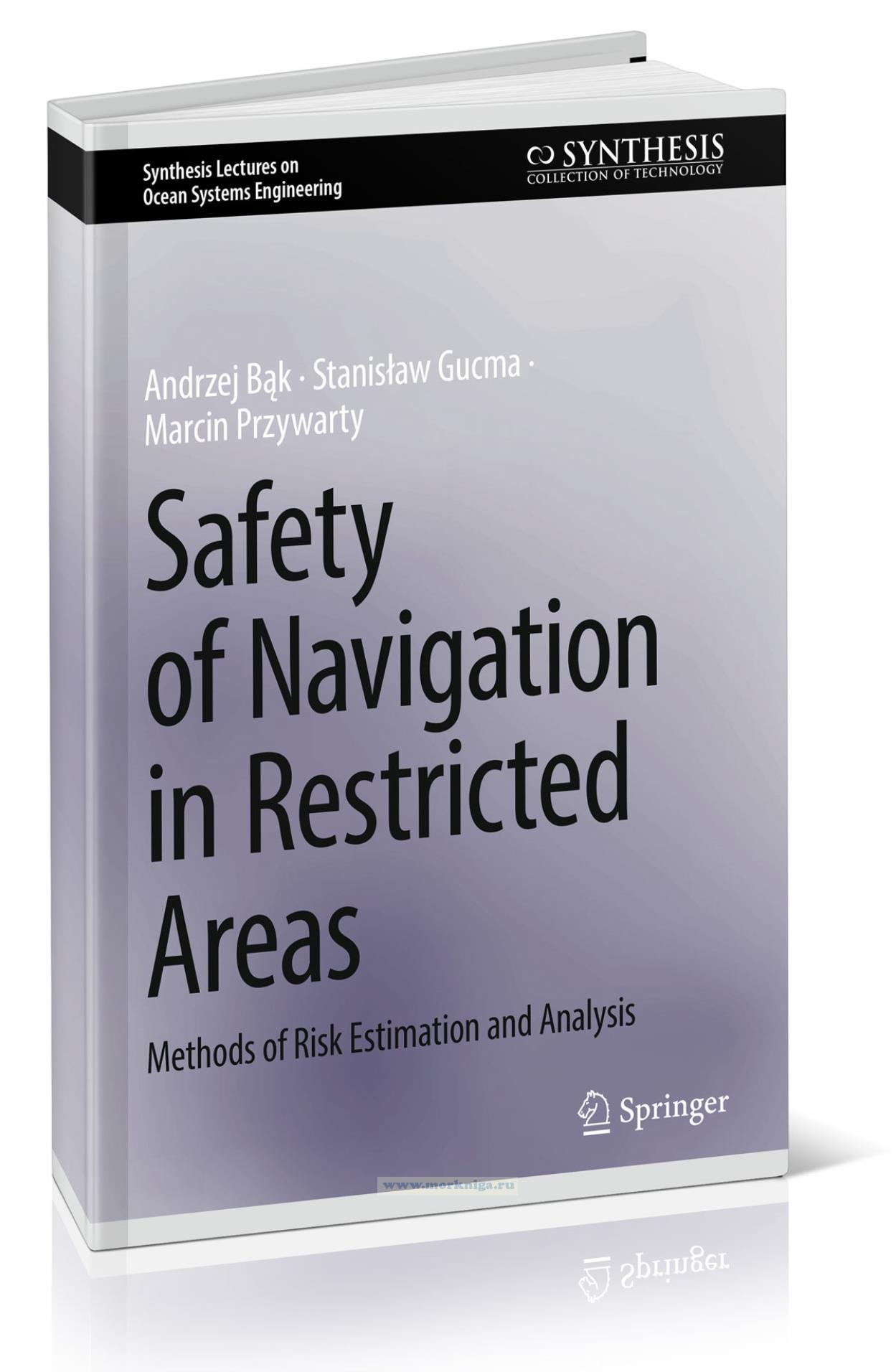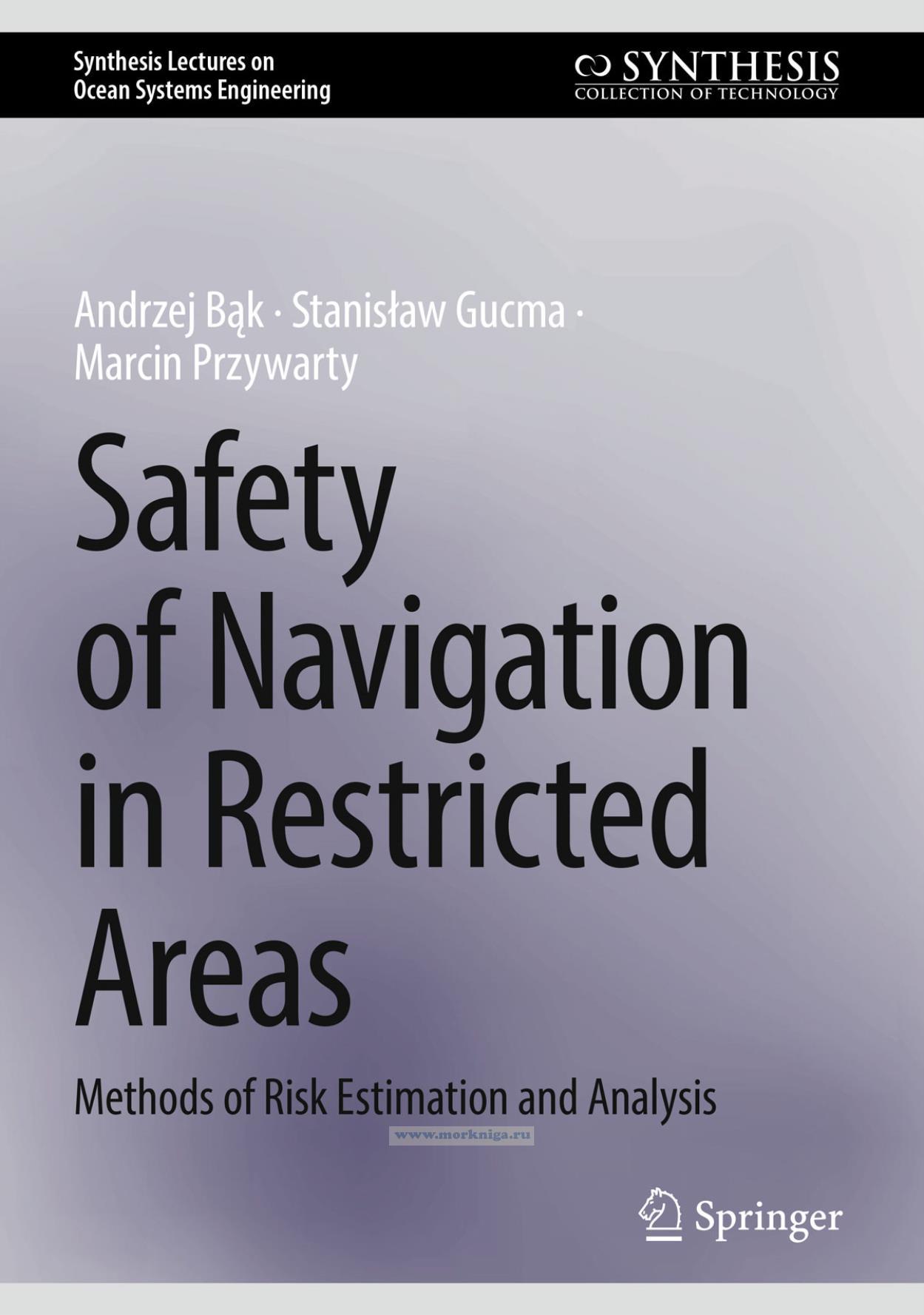Сб с 10 до 16
Safety of Navigation in Restricted Areas. Methods of Risk Estimation and Analysis/Безопасность мореплавания в ограниченных районах. Методы оценки и анализа рисков
Книга на английском языке
Navigational safety is the state of a marine traffic engineering system, related to accident- free conduct of a ship towards its destination, maintaining required movement parameters, i.e. it is the state of the system related to accident-free performance of specific manoeuvres in a restricted area.
The safety of navigation on sea waterways, particularly on port waterways, is the basic factor limiting the expansion of ports and operations of bigger ships in ports. Navigation risk is a criterion of navigational safety assessment allowing its accurate estimation in port waterways. Methods of navigation risk estimation and analysis is one of the major issues in shipping today.
The themes of this monograph include modern engineering problems of marine traffic engineering, focusing on what this discipline deals with: navigational safety assessment methods. These include:
criteria of assessing navigational safety in restricted areas,
navigation risk, as a complex criterion of navigational safety assessment in waterway systems,
models of navigation risk determination used worldwide,
conditions of safe operation of ships on waterways determined by using navigation risk.
minimum safe tug assistance on port waterways and
navigation risk management in waterway systems with a description of a computer program for model-based tests of navigational safety on Southern Baltic waterways.
Contents
1 Safety of Navigation in Restricted Areas
1.1 Conditions of Safe Operation of Ships in Restricted Areas
1.2 Criteria of Assessing Navigational Safety in Restricted Areas
1.2.1 Probability of Accident-Free Performance of a Specific Manoeuvre
1.2.2 Underkeel Clearance
1.2.3 Safe Manoeuvring Area
1.2.4 Kinetic Energy of Berthing Impact
1.2.5 Speed of Ship’s Propeller Streams
1.2.6 Duration of Manoeuvre Execution
1.3 Navigation Risk as Complex Criterion of Navigational Safety Assessment in Restricted Areas
1.3.1 Probability of Accidents in Sea Waterways
1.3.2 Consequences of Accidents in Restricted Areas
1.4 Navigation Risk in Sea Waterway Systems
1.4.1 Navigation Risk on Various Types of Port Waterways
1.4.2 The Turning Basin, Port Basin (Turning Manoeuvre)
1.4.3 Port Basin (Berthing Manoeuvre)
1.4.4 Navigation Risk of the Port as a System of Various Types of Waterways
2 Models of Navigation Risk Used in Restricted Areas
2.1 Matrix Methods
2.2 Logical Tree Methods
2.2.1 Fault Trees
2.2.2 Event Trees
2.3 Simulation Methods
2.4 Model of the Navigational Risk Recommended by the IMO
2.4.1 Definition of the Problem
2.4.2 Identification of Hazards
2.4.3 Risk Analysis
2.4.4 Identification of Risk Control Methods
2.4.5 Cost-Benefit Assessment
2.4.6 Recommendations for Decision Makers
2.5 Model of Navigation Risk Recommended by the IALA
2.5.1 Qualitative Risk Assessment
2.5.2 Quantitative Risk Assessment
2.6 Model of Navigational Risk Developed by the Massachusetts Institute of Technology
2.7 Model of Navigation Risk Assessment Developed by the PIANC
2.8 Model of Navigation Risk Developed by the Maritime University of Szczecin
3 Conditions of Safe Ship Operation in Restricted Areas Determined by Navigation Risk Assessment Methods
3.1 Conditions of Safe Operation of Ships in Various Types of Port Waterways Determined by Using Navigation Risk
3.2 Conditions of Safe Operation of Ships Determined by Using Navigational Risk on Fairways
3.2.1 Risk of Moving out of Available Navigable Fairway Area Due to Deterioration of Navigational Conditions
3.2.2 Risk of Moving out of Available Navigable Fairway Area Due to Technical Failures of Machinery
3.2.3 Estimation of Navigational Risk on Fairways
3.3 Conditions of Safe Operation of Ships in Port Basins Determined by Using Navigational Risk
3.3.1 Risk of Moving out of Available Navigable Area of Port Basin Due to Deteriorated Navigational Conditions
3.3.2 Risk of Moving out of the Available Navigable Area of the Port Basin Due to Technical Failures of Shipboard Machinery or Tugs
3.3.3 Accident Risk During Berthing
3.4 Conditions of Safe Ship Operation Determined by Using Relative Risk Methods
3.5 Minimum Safe Tug Assistance in Ship Manoeuvres in Port Waterways
3.5.1 Minimum Safe Tug Assistance at Port Entrances and Basins ...
3.5.2 Tug Assistance in Approach Channels
4 Navigation Risk Management in Waterway Systems
4.1 Enhancing Waterway Safety
4.1.1 Methodology of Formal Safety Assessment Used in Risk Management Systems
4.1.2 General Assumptions of Risk Management System in Southern Baltic Waterways
4.1.3 Subsystem of Navigational Safety Management in Open Sea Areas
4.1.4 Subsystem of Navigational Safety Management in Restricted Areas
4.1.5 Module of Determining Safe Manoeuvring Area and Navigation Risk in Individual Sections of Restricted Area Waterways
4.1.6 Safety Management Program NEPTUN for Model-Based Research into Navigational Safety in Southern Baltic Sea Waterways
4.2 Working with the Safety Management System NEPTUN
4.2.1 Module of Calculating Safe Manoeuvring Area Width (Restricted Area)
4.2.2 Risk Calculation Module
4.2.3 Module of Trajectory Recommendations Based on Incident Analysis
4.2.4 Module of Legal Regulations Analysis
4.2.5 Electronic Navigational Chart
4.2.6 Display of Incidents
4.2.7 Display of Accidents
4.2.8 Risk Calculation
Appendix
References

